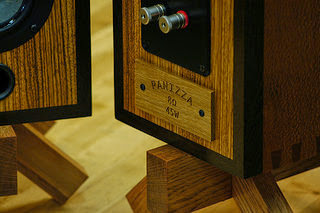 The need for something to hold some lamps on prompted me to build a set of four lamp stands rather than go out and purchase something adequate, but maybe not exactly what I was looking for. My place is rather space-constrained, so I thought it would be a good idea to combine functions and use the stands for additional storage.
The need for something to hold some lamps on prompted me to build a set of four lamp stands rather than go out and purchase something adequate, but maybe not exactly what I was looking for. My place is rather space-constrained, so I thought it would be a good idea to combine functions and use the stands for additional storage.Two things that came to mind at the time I was building them were storage for compact discs and wine bottles. I purchase music on compact disc rather than download music from something like iTunes because the sound quality of the average download for me is too far below average.
I did not want to put a lot of effort into building them, so my stands were basically simple frame units that shared the same concept and construction method. Each is formed of two side frames joined by horizontal rails with a top attached. This defines the basic design architecture. By changing the horizontal rails though, each completed unit adopts a unique function. The cd stands have rails with an opposing angled edge while the wine rack stand rails have a semi-circular cutout large enough to cradle the average bottle of wine. Additional color variation was achieved by making the rails from various left over scrap stock that included padauk, tzalam, Peruvian walnut, and old growth white oak.
A lot of the design work was simplified by using parametric solids modeling. Such basic assemblies as the side frames could be reused in each design derivative with little or no modification which also saved construction time in the shop.
This basic design concept can be viewed as a simple product platform producing a small range of product family.






